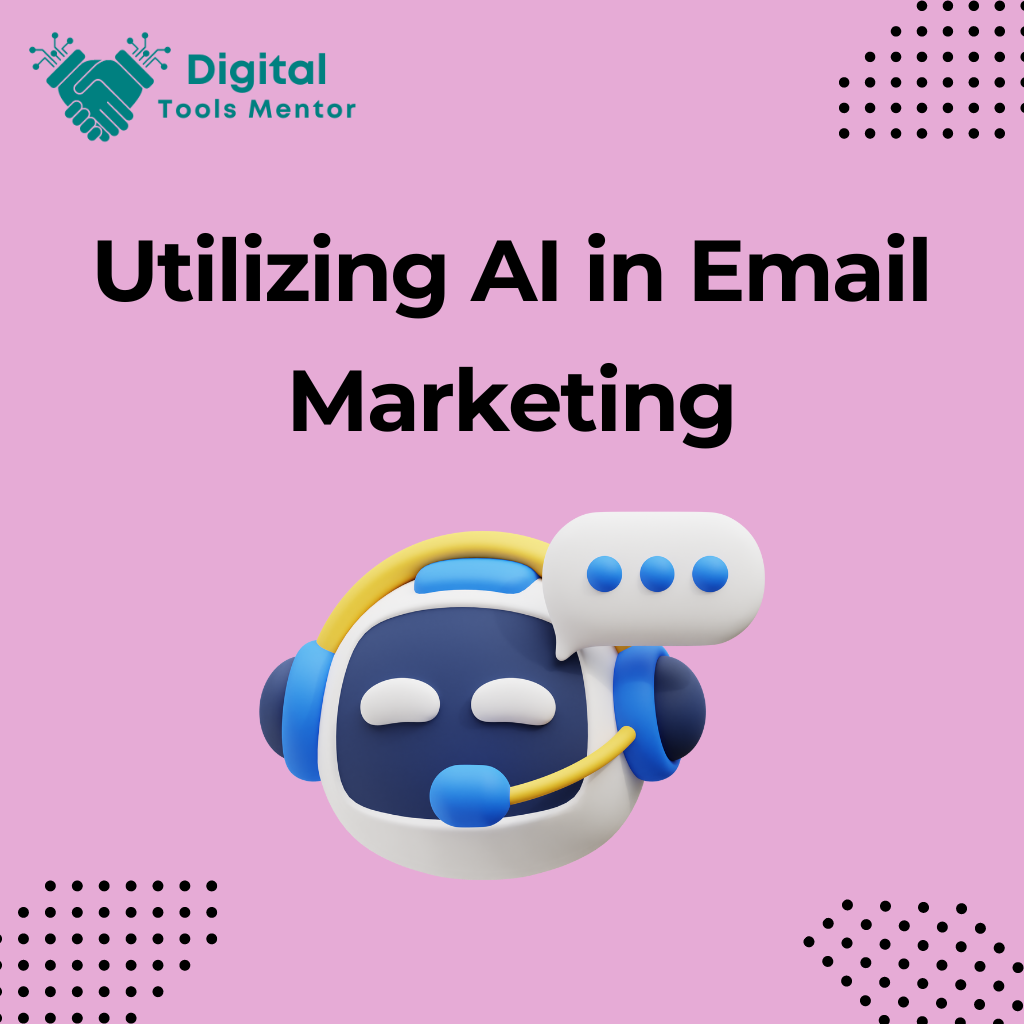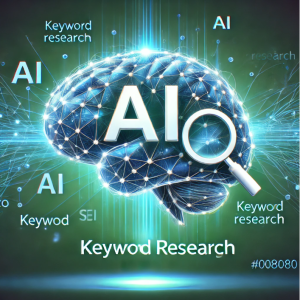Revolutionizing Email Campaigns: Utilizing AI in Email Marketing
Email marketing has been a cornerstone of digital marketing strategies for decades, evolving from simple, broad-spectrum messaging to highly targeted, personalized communications. As technology has advanced, so too has the complexity and effectiveness of email marketing campaigns, largely due to the integration of artificial intelligence (AI). Today, AI is not just a futuristic concept but a practical tool that is reshaping how businesses interact with their customers through email. AI in email marketing refers to the use of machine learning algorithms, data analysis, and automation technologies to enhance various aspects of email campaigns. From crafting personalized content and optimizing send times to segmenting audiences and predicting future behaviors, AI tools offer a range of capabilities designed to increase the efficiency and effectiveness of email marketing strategies.
The potential benefits of integrating AI into email marketing are substantial. AI-driven campaigns can lead to higher open rates, improved click-through rates, and increased conversions. More importantly, they can help marketers understand their audiences on a deeper level, delivering content that is not only relevant but also timely and engaging. By automating routine processes and providing insights derived from data analytics, AI allows marketers to focus on creative and strategic tasks, pushing the boundaries of what email marketing can achieve.
As we delve deeper into the specific functionalities and advantages of AI in email marketing, it becomes clear that embracing this technology is crucial for businesses looking to succeed in a highly competitive digital landscape.
Read 23 Best Email Marketing Platforms in 2025
Understanding AI in Email Marketing
Artificial Intelligence (AI) in the context of email marketing involves the use of advanced algorithms and technologies that enable machines to perform tasks that typically require human intelligence. These tasks can range from interpreting text and predicting user behavior to making decisions about when to send emails for maximum effect. The integration of AI into email marketing transforms traditional approaches by adding efficiency, precision, and personalization.
AI and Its Relevance to Email Marketing
AI refers to the capability of a machine to imitate intelligent human behavior. In email marketing, AI is employed to automate and optimize the email campaign process, allowing for more personalized, targeted communication that resonates with each recipient. It enhances various facets of email marketing, from initial strategy formulation to post-campaign analysis, helping marketers to send the right message, to the right person, at the right time.
Types of AI Technologies Used in Email Marketing
- Machine Learning (ML): This technology allows AI systems to learn from data patterns and improve over time without being explicitly programmed. In email marketing, machine learning algorithms analyze past campaign data to understand what type of content performs best, which segments are most responsive, and which customers are likely to convert or churn. These insights help in continuously refining campaign strategies.
- Natural Language Processing (NLP): NLP enables AI systems to understand and generate human language in a way that is valuable for creating content. In email marketing, NLP can be used to draft personalized email content that engages different segments of the audience, optimizing everything from the subject line to the body content for readability and engagement.
- Predictive Analytics: This AI technology uses data, statistical algorithms, and machine learning techniques to identify the likelihood of future outcomes based on historical data. For email marketing, predictive analytics can forecast customer behaviors, like whether they will open an email, click on a link, or make a purchase, thereby helping marketers to tailor their strategies accordingly.
Each of these AI technologies brings unique advantages to email marketing campaigns. Machine learning enhances decision-making by identifying what strategies yield the best open and conversion rates. NLP improves how content is created and personalized, making each communication feel more relevant and engaging. Predictive analytics anticipates future actions of users, allowing marketers to be proactive rather than reactive in their campaign strategies.
By leveraging these AI technologies, email marketing not only becomes more efficient but also more effective, driving better results through automation, customization, and optimization.
Segmentation and Personalization
Segmentation and personalization are foundational elements of effective email marketing strategies. AI significantly amplifies these elements by harnessing vast amounts of data and applying sophisticated analytical techniques to deliver content that resonates deeply with individual recipients. Here’s how AI enhances both segmentation and personalization in email marketing.
AI-Enhanced Segmentation
Segmentation involves dividing a customer base into groups or segments based on shared characteristics. Traditionally, these segments might be based on simple criteria like age, location, or past purchases. AI takes segmentation to a new level by analyzing complex patterns of customer behavior and multiple demographic factors.
- Behavioral Analysis: AI algorithms can process large datasets to identify subtle patterns in customer behavior, such as how frequently they purchase certain types of products, their peak activity times on a website, and their response to previous marketing campaigns.
- Predictive Customer Segmentation: AI can predict future behavior based on historical data, allowing marketers to create segments of users likely to be interested in new products, at risk of churning, or who might be responsive to upselling opportunities.
- Dynamic Segmentation: Unlike static segments that are periodically updated, AI can update customer segments in real-time as new data comes in. This ensures that marketing efforts are always targeted at the most relevant audience.
AI-Driven Personalization
Personalization means tailoring the content of emails to meet the unique interests and needs of each recipient. AI elevates personalization from a manual, rule-based approach to a dynamic, context-aware strategy.
- Content Customization: Using NLP and machine learning, AI can generate and recommend personalized email content, including product recommendations and special offers that align with individual customer interests and purchase history.
- Contextual Relevance: AI can analyze the time of day, device used, and even the weather conditions at the recipient’s location to tailor the email’s message, tone, and offerings. For example, sending promotions for umbrellas to customers located in areas where it’s currently raining.
- Predictive Content Engagement: AI tools can predict which types of content will engage specific users the most, whether it’s video, images, or text-heavy emails. This predictive capability ensures that each email is not only relevant but also engaging for the recipient.
Personalization and segmentation driven by AI not only lead to higher engagement rates but also build deeper customer loyalty. By delivering messages that are perceived as more thoughtful and relevant, businesses can significantly enhance their relationship with customers. This targeted approach means that customers receive fewer but more relevant emails, which can reduce fatigue and enhance the overall effectiveness of email marketing campaigns.
Optimizing Send Times
One of the most impactful ways AI improves email marketing effectiveness is by optimizing the timing of email deliveries. By ensuring that emails arrive in recipients’ inboxes at the most opportune moment, AI significantly increases the likelihood of those emails being opened and acted upon.
How AI Predicts Optimal Send Times
AI-driven send-time optimization relies on analyzing large amounts of data to determine when recipients are most likely to engage with emails. This involves understanding patterns in user behavior, such as:
- Historical Open Times: AI algorithms analyze past engagement data to identify when individual users are most likely to open emails. This might include specifics like time of day, day of the week, and even holidays or special events.
- User Behavior Modeling: Beyond simple historical data, AI can model user behavior to predict future activity. This modeling considers changes in user activity patterns, such as shifts in a user’s schedule or changes in their interaction with previous campaigns.
- Real-Time Adjustments: AI systems can adapt to real-time data, adjusting send times based on immediate behaviors. For example, if a user typically opens emails in the evening but suddenly starts opening them in the morning, the AI can adjust accordingly.
Tools That Automate Send-Time Optimization
Several email marketing tools harness AI to automate the process of send-time optimization, making it easier for marketers to reach their audience effectively without needing to manually analyze data. Some notable examples include:
- Klaviyo: This platform uses AI to help marketers optimize their send times by learning from the behavior of each subscriber. It adjusts send times based on when individual recipients are most likely to engage, enhancing the effectiveness of marketing campaigns.
- Sendinblue: With its machine learning algorithms, Sendinblue offers a feature called “Send Time Optimization,” which predicts the best time to send emails to each contact on your list based on their previous interactions with your emails.
- Mailchimp: Known for its user-friendly interface, Mailchimp also provides send-time optimization capabilities powered by AI. It uses data from millions of emails to determine the optimal send times for different segments, improving overall campaign performance.
- ActiveCampaign: This tool uses predictive sending to automatically send emails at the most engaging times for each contact, personalizing send times at an individual level.
By utilizing these AI-powered tools, marketers can remove much of the guesswork involved in planning email campaigns. Instead of relying on broad assumptions or generic best practices about when to send emails, they can use AI to ensure each email has the best possible chance of being seen and acted upon. This tailored approach not only boosts engagement rates but also enhances the overall user experience by aligning with each recipient’s preferences and behaviors.
Content Optimization
In email marketing, the content of your message—from the subject line to the body—is critical in capturing attention and engaging recipients. AI plays a pivotal role in optimizing this content, ensuring that it resonates with the target audience effectively. Here’s how AI contributes to content optimization and some tools that leverage AI to enhance email content.
AI in Crafting Compelling Subject Lines and Email Content
- Personalized Subject Lines: AI analyzes data from past interactions to generate subject lines that are more likely to appeal to individual recipients. By understanding nuances such as tone preference, engagement history, and personal interests, AI can tailor subject lines that increase the likelihood of the emails being opened.
- Dynamic Content Generation: Beyond subject lines, AI can help create personalized email bodies. Using techniques like natural language processing (NLP), AI can generate text that not only reads naturally but also aligns with the user’s reading preferences and previous interactions. This can include personalized greetings, tailored product recommendations, or custom content blocks that address a recipient’s specific needs.
- Content Adaptation Based on User Feedback: AI systems continually learn from how recipients interact with emails. If certain types of content consistently perform better, AI can adapt future emails to incorporate more of these elements. Conversely, content that tends to underperform can be phased out or adjusted.
Tools That Assist in Testing and Refining Email Content Using AI Algorithms
Several tools integrate AI to help marketers optimize their email content effectively:
- Phrasee: Phrasee uses AI to generate and optimize email subject lines and content. It employs language models tailored to a brand’s voice, making it capable of producing content that not only performs well but also aligns seamlessly with the brand’s identity.
- Persado: Persado uses a unique approach called “cognitive content generation,” which applies AI to craft messages that can emotionally engage users. It analyzes the emotional responses elicited by various phrases and words, optimizing content to boost engagement and conversions.
- Boomerang for Email: While primarily known for its email scheduling features, Boomerang also includes a “Respondable” feature, which uses AI to rate the effectiveness of your emails based on factors like subject length, question count, and politeness. It gives real-time suggestions to improve these aspects before sending.
- Seventh Sense: This tool is designed to optimize email send times and content engagement. It not only predicts optimal send times but also uses AI to help determine the best content for each recipient based on their engagement patterns.
By leveraging these AI-powered tools, marketers can ensure that their email content is not only well-crafted and personalized but also continuously optimized based on detailed analytics and user feedback. This leads to more effective communications that resonate on a personal level with recipients, driving higher engagement and better overall campaign results.
Predictive Analytics
Predictive analytics is a facet of AI that involves using historical data, statistical algorithms, and machine learning techniques to predict future behaviors and preferences. In email marketing, this capability can transform how campaigns are structured, targeted, and optimized, leading to significantly improved outcomes.
Using Historical Data and Real-Time Insights
- Learning from Historical Interactions: AI algorithms analyze patterns and trends from past email campaigns to understand what types of content, design, and call-to-action work best with different segments of the audience. This includes data on open rates, click-through rates, conversion rates, and even unsubscribe rates.
- Real-Time Behavior Analysis: Beyond historical data, predictive analytics also uses real-time insights to adjust campaign strategies dynamically. For instance, if a user’s interaction with a website or a recent campaign suggests a growing interest in a particular product category, AI can immediately leverage this information to tailor upcoming emails to these interests.
- Customer Journey Mapping: By predicting the future actions of customers, AI can map out potential customer journeys and identify critical touchpoints where targeted interventions (like personalized emails) could effectively move the customer closer to a conversion.
Case Studies: Successful Applications of Predictive Analytics in Email Marketing
Case Study 1: E-commerce Brand Increases Sales with Predictive Product Recommendations
- Challenge: An e-commerce brand noticed that their broad-spectrum product recommendation emails had low conversion rates.
- Solution: The brand implemented AI-driven predictive analytics to analyze individual customer purchase history and browsing behavior.
- Result: By integrating predictive product recommendations into their emails, the brand saw a 30% increase in email-driven sales, as recommendations were highly tailored and relevant to each recipient.
Case Study 2: Travel Agency Boosts Engagement Through Predictive Timing
- Challenge: A travel agency struggled with low engagement rates due to sending emails at ineffective times.
- Solution: The agency used AI to analyze when their customers were most likely to engage with emails based on past behavior and real-time data like recent searches on their website.
- Result: The implementation of predictive send-time optimization led to a 25% increase in open rates and a 15% uplift in click-through rates.
Case Study 3: Nonprofit Enhances Fundraising with Donor Segmentation
- Challenge: A nonprofit organization wanted to improve the efficiency of its fundraising emails, which were not sufficiently personalized.
- Solution: By employing predictive analytics, the nonprofit was able to segment its donors based on their past giving behavior and likelihood to donate again.
- Result: This targeted approach allowed the nonprofit to tailor its messages according to donor segments, resulting in a 40% increase in donation rates from email campaigns.
These case studies demonstrate how predictive analytics can be effectively utilized in email marketing to enhance personalization, timing, and overall campaign relevance. By anticipating customer behaviors and preferences, businesses can craft more effective emails that resonate with their audience and drive desired actions, ultimately achieving better ROI on their marketing efforts.
Automating Email Campaigns
Automation in email marketing, powered by AI, is a game-changer for how businesses communicate with their customers. It not only streamlines operations but also enhances the effectiveness of campaigns through timely and relevant interactions. Here’s a look at how AI contributes to automating email campaigns and the benefits of such automation.
AI’s Role in Automating Routine Tasks
AI-driven automation involves setting up email campaigns that are triggered by specific actions or behaviors exhibited by customers. This can include a wide range of activities:
- Behavioral Triggers: Sending emails based on individual actions such as visiting a website, clicking on a link, abandoning a cart, or viewing a product. AI can detect these actions in real-time and automatically send an appropriate, personalized email to nudge the customer towards a purchase.
- Lifecycle Triggers: AI can identify where a customer is in the lifecycle—from a new subscriber to a frequent buyer—and trigger emails that are appropriate for that stage. For instance, welcome emails for new subscribers, loyalty offers for frequent buyers, or re-engagement emails for those who haven’t made a purchase recently.
- Event-Based Triggers: Special occasions such as birthdays, anniversaries, or significant holidays can also trigger automated emails. AI systems can keep track of these dates for each customer and send personalized greetings or offers, enhancing customer engagement and loyalty.
Benefits of Automation in Email Communication
The automation of email campaigns offers several compelling benefits that can transform a marketing strategy:
- Consistency: Automation ensures that communications are consistent in both timing and message. Every customer receives the same level of attention, tailored to their specific behaviors and preferences, without the risk of human error or oversight.
- Efficiency: By automating routine tasks, businesses can free up marketing resources to focus on more strategic initiatives such as campaign planning, content creation, and data analysis. Automation handles the repetitive aspects of email marketing, allowing teams to optimize their workflows and productivity.
- Scalability: AI-driven automation scales effortlessly. Whether you have hundreds of customers or thousands, automated systems can manage personalized communication with each, ensuring no one is overlooked as your business grows.
- Timeliness: Automated emails are sent at the optimal moment for engagement, based on AI’s analysis of when a customer is most likely to open and read an email. This timeliness significantly increases the effectiveness of marketing communications.
- Personalization at Scale: Perhaps one of the most significant benefits, AI automation allows for deep personalization without the manual effort typically required to segment and tailor communications to individual customers. This means even small marketing teams can execute complex, highly personalized campaigns.
In conclusion, the automation of email campaigns via AI is indispensable for modern email marketing. It not only improves operational efficiency and campaign effectiveness but also plays a crucial role in building stronger, more personalized customer relationships. As AI technology continues to evolve, the scope and sophistication of automated email marketing are expected to expand, offering even more innovative ways to engage customers effectively.
Enhancing Email Design
In the realm of email marketing, the visual appeal and responsiveness of emails play crucial roles in capturing the attention of recipients and driving engagement. AI tools are increasingly being used to refine email design, ensuring that emails not only look appealing but are also optimized for various devices and email clients. Here’s how AI is transforming email design and some examples of AI-based tools that are leading this change.
AI’s Role in Enhancing Email Design
- Responsive Design Optimization: AI algorithms can automatically adjust the layout, size, and scale of email components to fit different screen sizes and resolutions. This ensures that emails look good whether they are viewed on a desktop, tablet, or smartphone.
- Visual Optimization: AI can analyze the performance of different visual elements in emails (like images, buttons, and font styles) across various campaigns to determine what designs generate the most engagement. Using this data, AI can recommend or even automatically apply design elements that are most likely to increase open and click-through rates.
- A/B Testing at Scale: Traditional A/B testing can be resource-intensive, often limiting marketers to testing a few design elements. AI accelerates this process by simultaneously testing multiple variants of email designs, quickly identifying and applying the most effective elements.
- Accessibility Enhancements: Ensuring that emails are accessible to all, including people with disabilities, is critical. AI can help by suggesting changes to improve the accessibility of emails, such as optimal color contrasts and text sizes, ensuring compliance with accessibility standards.
Examples of AI-Based Design Tools
Several tools incorporate AI to assist marketers in creating effective and visually appealing email designs:
- Adobe Spark: Powered by Adobe’s AI, Adobe Sensei, Spark enables users to create stunning email graphics and web pages quickly. It uses AI to suggest the best layouts and designs based on the content you input, making professional design accessible to marketers without a background in graphic design.
- Canva: While primarily known for its user-friendly design features, Canva also uses machine learning to offer design suggestions and improve user workflows. For email marketing, it can suggest templates and layouts that are trending or have shown high engagement rates across its platform.
- Mailchimp’s Creative Assistant: Built into Mailchimp’s platform, the Creative Assistant uses AI to automatically generate beautiful designs tailored to your brand. It helps users quickly create consistent, aesthetically pleasing email content that resonates with their audience.
- Phrasee: Phrasee specializes in AI for optimizing email subject lines and content, but it also extends into optimizing the language used in calls to action and button design for better performance.
Impact on User Engagement
AI-driven design tools have a significant impact on user engagement by ensuring that every aspect of an email’s design is optimized for performance. They allow marketers to implement personalized, visually appealing emails at scale, which can lead to higher open rates, increased click-through rates, and ultimately, a better return on investment. By leveraging AI, marketers can continuously evolve their email designs based on real-time feedback and emerging trends, keeping their campaigns fresh and engaging.
In conclusion, AI is proving to be an invaluable asset in the design and optimization of email campaigns, helping marketers overcome traditional challenges associated with email design and allowing for a more dynamic, data-driven approach to visual engagement.
Measuring Campaign Effectiveness
Accurately measuring the effectiveness of email marketing campaigns is crucial for refining strategies and achieving better outcomes. AI enhances this process by providing deeper analytics and actionable insights that go beyond traditional metrics. Here’s how AI capabilities transform the measurement of campaign effectiveness and facilitate smarter decision-making.
AI in Campaign Analytics
- Advanced Data Analysis: AI can handle complex data sets and perform multivariate analysis to uncover relationships between different campaign variables and outcomes. This might include analyzing how the timing, content, and audience demographics interact to affect open rates and conversions.
- Real-Time Monitoring and Adjustments: Unlike static reports, AI systems can monitor campaign performance in real time and provide instant feedback. This allows marketers to make swift adjustments to their campaigns, such as pausing underperforming ads or tweaking messaging that isn’t resonating as expected.
- Predictive Performance Modeling: AI uses historical data to predict future campaign performance under various scenarios. This predictive capability helps marketers anticipate the outcomes of their campaigns and make pre-emptive tweaks to enhance effectiveness.
- Customer Sentiment Analysis: Utilizing natural language processing (NLP), AI tools can analyze the tone and sentiment of responses received in email campaigns, providing insights into how customers truly feel about the brand or product. This level of insight is invaluable for adjusting not just the campaigns themselves but broader marketing strategies.
AI-Driven Insights and Decision-Making
AI-driven insights are not just data points; they are actionable recommendations that can guide strategic decisions:
- Segment Refinement: AI might reveal that certain customer segments are responding more positively to a particular style of email content. Marketers can use this insight to further refine their segmentation strategy, tailoring more precisely to the preferences of different groups.
- Content Optimization: By identifying which types of content perform best, AI helps marketers optimize their content strategy. For example, if AI insights show that interactive content like polls or quizzes leads to higher engagement rates, marketers might decide to incorporate more of these elements in future campaigns.
- Budget Allocation: AI can also aid in more effective budget allocation by highlighting which aspects of the email marketing strategy are delivering the best ROI. Marketers can shift resources to capitalize on these high-performing areas to maximize overall campaign efficiency.
- Long-term Planning: The deep analytics provided by AI can influence not just individual campaigns but also long-term marketing strategies. For instance, if AI identifies emerging trends in customer behavior, companies can adjust their product development and marketing strategies accordingly.
Tools Leveraging AI for Analytics
Several sophisticated tools utilize AI to enhance campaign analytics:
- HubSpot: Offers comprehensive AI-powered analytics that can track email campaign performance across various metrics, providing a holistic view of effectiveness.
- Salesforce Marketing Cloud: Uses AI to offer predictive analytics and detailed customer journey insights, helping marketers to be proactive in their campaign adjustments.
- Google Analytics: While primarily for web analytics, when integrated with email marketing data, Google’s AI capabilities can help in understanding how email campaigns drive users to engage with the website and convert.
In summary, AI’s role in measuring and enhancing email marketing campaign effectiveness cannot be overstated. By providing deeper insights and real-time data, AI enables marketers to make informed decisions that refine their strategies, optimize their spending, and ultimately, achieve better engagement and conversion rates. This smarter, data-driven approach ensures that email marketing remains a powerful tool in the digital marketer’s arsenal.
Ethics and Best Practices
As AI becomes increasingly integral to email marketing strategies, addressing ethical considerations such as privacy, data security, and transparency is crucial. Marketers must navigate these concerns carefully to maintain trust and ensure compliance with regulations. This section outlines key ethical considerations and best practices for integrating AI into email marketing responsibly.
Ethical Considerations in Using AI
- Privacy Concerns: AI systems often require vast amounts of data to function optimally, which can include sensitive personal information. Ensuring that this data is collected, stored, and used in a manner that respects user privacy is paramount. Marketers must be transparent about what data is collected and how it is used.
- Data Security: With the increase in data breaches and cyber threats, securing customer data is a critical responsibility. Marketers must ensure that the AI tools they use comply with the highest standards of data security and are regularly updated to counter new threats.
- Bias and Fairness: AI systems are only as unbiased as the data they are trained on. If the underlying data contains biases, the AI’s decisions and actions can perpetuate these biases, leading to unfair treatment of certain groups. Marketers need to regularly audit and update their AI models to mitigate any inherent biases.
- Transparency: Customers have the right to know that AI is being used in their interactions and how it affects the decisions made about them. Transparency not only fosters trust but also aligns with emerging regulations about AI accountability.
Best Practices for Integrating AI Responsibly
- Comply with Regulations: Stay informed about and comply with all relevant laws and regulations regarding data protection and privacy, such as GDPR in Europe or CCPA in California. These regulations provide a framework for responsible data management practices that respect user privacy.
- Use Opt-In Policies: Ensure that users are clearly informed about what data is being collected and how it will be used. Use opt-in policies that allow users to consent to their data being used for specific purposes, including the use of AI in personalizing their experiences.
- Implement Robust Security Measures: Use encryption, secure data storage solutions, and other cybersecurity measures to protect customer data. Regularly audit your AI systems and data practices to identify and address vulnerabilities.
- Educate Your Audience: Inform your customers about how AI is being used in your email marketing strategies. This could be through detailed FAQs, transparency reports, or direct communications. Educating your audience not only builds trust but also enhances their understanding of the benefits of AI.
- Monitor AI Decisions: Continuously monitor the decisions made by AI systems to ensure they are fair, unbiased, and beneficial to users. Adjust algorithms as needed to correct biases and improve outcomes.
- Prioritize Ethical AI Partners: Choose AI service providers and technology partners who prioritize ethical considerations and demonstrate compliance with best practices and regulations. This partnership will reinforce your commitment to ethical AI usage.
By adhering to these ethical considerations and best practices, marketers can harness the power of AI in their email marketing campaigns while maintaining a trustworthy relationship with their audience. Ethical use of AI not only mitigates risks but also enhances brand reputation and customer loyalty in the long term.
Conclusion
The integration of AI into email marketing represents a significant advancement in how businesses connect with their customers. AI’s ability to analyze vast amounts of data, predict customer behaviors, personalize content, and optimize delivery times transforms traditional email strategies into dynamic, effective, and highly engaging campaigns.
Recap of Benefits and Challenges
Benefits:
- Enhanced Personalization and Segmentation: AI enables hyper-personalized content delivery and precise segmentation based on real-time data analysis.
- Optimized Timing and Content: AI predicts the optimal times to send emails and helps craft compelling content that resonates with the audience, improving open and click-through rates.
- Efficient Campaign Management: Through automation, AI reduces the workload on marketing teams, allowing them to focus on strategy and creativity.
- Advanced Analytics and Insights: AI provides deep insights into campaign performance, offering actionable intelligence to refine marketing efforts continually.
Challenges:
- Data Privacy and Security: Handling personal data responsibly and ensuring compliance with privacy laws is crucial.
- Overcoming Technical Complexity: Implementing and managing AI solutions requires a certain level of technical expertise, which can be a barrier for some organizations.
- Avoiding AI Bias: Ensuring that AI algorithms are fair and unbiased is essential to prevent negative impacts on certain customer groups.
As the digital landscape becomes more competitive, leveraging AI tools in email marketing is not just an advantage; it’s becoming a necessity. AI’s capabilities allow marketers to stay ahead by enabling more personalized, engaging, and effective communications. Marketers should consider integrating AI into their strategies not only to enhance performance but also to future-proof their operations. By embracing AI, businesses can ensure they remain competitive in a rapidly evolving digital world, continuously delivering value to their customers while optimizing their marketing efforts.




